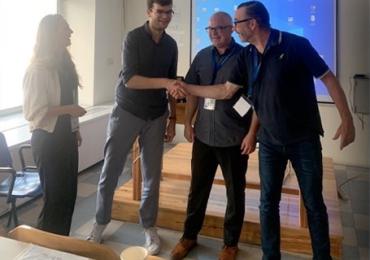
by Mila Gasco-Hernandez
Information Polity Associate Editor for North America
The 52th Hawaii International Conference on System Sciences (HICSS52), the longest standing scientific conference in the information systems and technology field, took place in Maui between January 8 and January 11. 2,099 authors presented 782 paper under 10 different tracks. Once more, of particular importance was the HICSS Digital Government Track, which has assumed over the years an excellent reputation among digital government scholars and the larger academic community. This year, fifteen minitracks covered the full spectrum of research avenues of digital government, including minitracks dedicated to emerging topics, open government, social media, smart cities and communities, government and disaster resiliency, and supply chain security.
Although all minitracks usually receive a good number of submissions, the minitrack on Smart and Connected Cities and Communities, which I have been co-chairing since 2015, is one of the most popular. This minitrack aims at exploring the challenges of smart cities and smart communities as well as to the impact of these initiatives. It also aims at focusing on the orchestrated interplay and balance of smart governance practices, smart public administration, smart communities, smart resources and talent leverage in urban, rural, and regional spaces facilitated by novel uses of ICT and other technologies. Although smartness has been traditionally associated with urban environments, in our minitrack we pay particular attention to the concept of smart communities. On one hand, this is the result of recognizing the existence of several contexts that can benefit from the use of smart technologies: there exists a continuum of groups of people from localities or villages to communities, communes, towns, places, cantons, cities, and megacities. On the other hand, it is the consequence of conceptualizing smartness beyond technology and in relation to the people living in those communities, who are united by common goals, interests, and challenges.
This year, the minitrack on Smart and Connected Cities and Communities included seven papers that represented different methodologies, theories, conceptualizations, and assessments of smart and connected cities and communities. Together, they offered a platform for discussion that resulted in three important conclusions. First, smart cities and communities can only be developed when different actors work together. Research has often referred to public-private partnerships as one example of how business and local governments can engage in joint smart projects (see the paper “Impact of Governance Structure Characteristics of Public-Private Partnerships on Smart City Project Success: Evidence from a Multi-case Study in China”). However, in addition to more traditional collaborations, there is also a need to recognize the role of different community actors, such as public libraries, as trusted information intermediaries and key facilitators in smart city and community initiatives (see the paper “Public Libraries as Anchor Institutions in Smart Communities: Current Practices and Future Development”).
Second, impact matters. Short and intermediate results are important particularly in terms of those necessary quick wins that keep motivation and investments high. Yet, smart developments need to consider long terms results in terms of increasing public value or improved quality of life (see the paper “In the search for the ‘smart’ source of the citizen’s perception of quality of life in European smart cities”). Finally, a smart city and community cannot only have citizens as recipients of its interventions, rather it needs to involve them in deciding the type of city they want and in designing, implementing, and evaluating smart projects. Understanding what motivates participation of citizens becomes therefore key (see the paper “Study of Individual Differences in the Behavior of Technology Users in the Context of Urban Mobility”).
New research and discussions are expected at HICSS53, which will be held again in Maui from January 7 to January 10, 2020. The call for papers will be out soon but you can already keep in mind that papers are due on June 15. I hope to see many of you in Hawaii!!!



